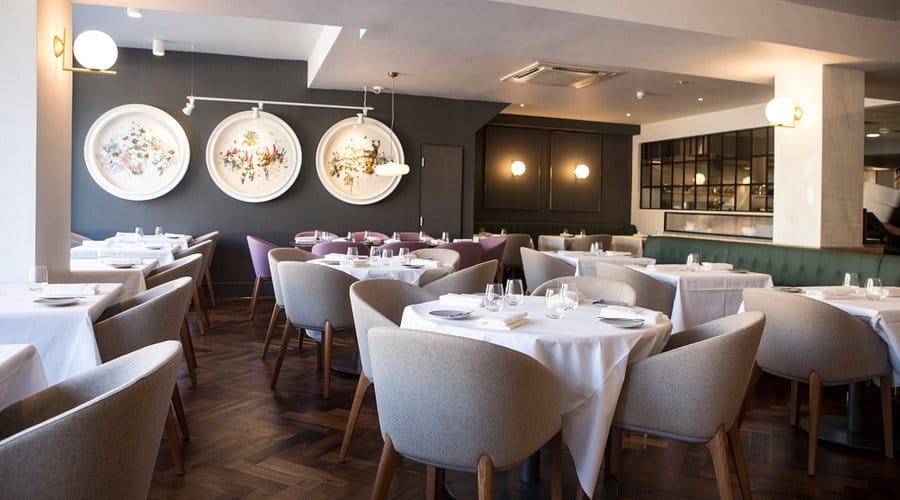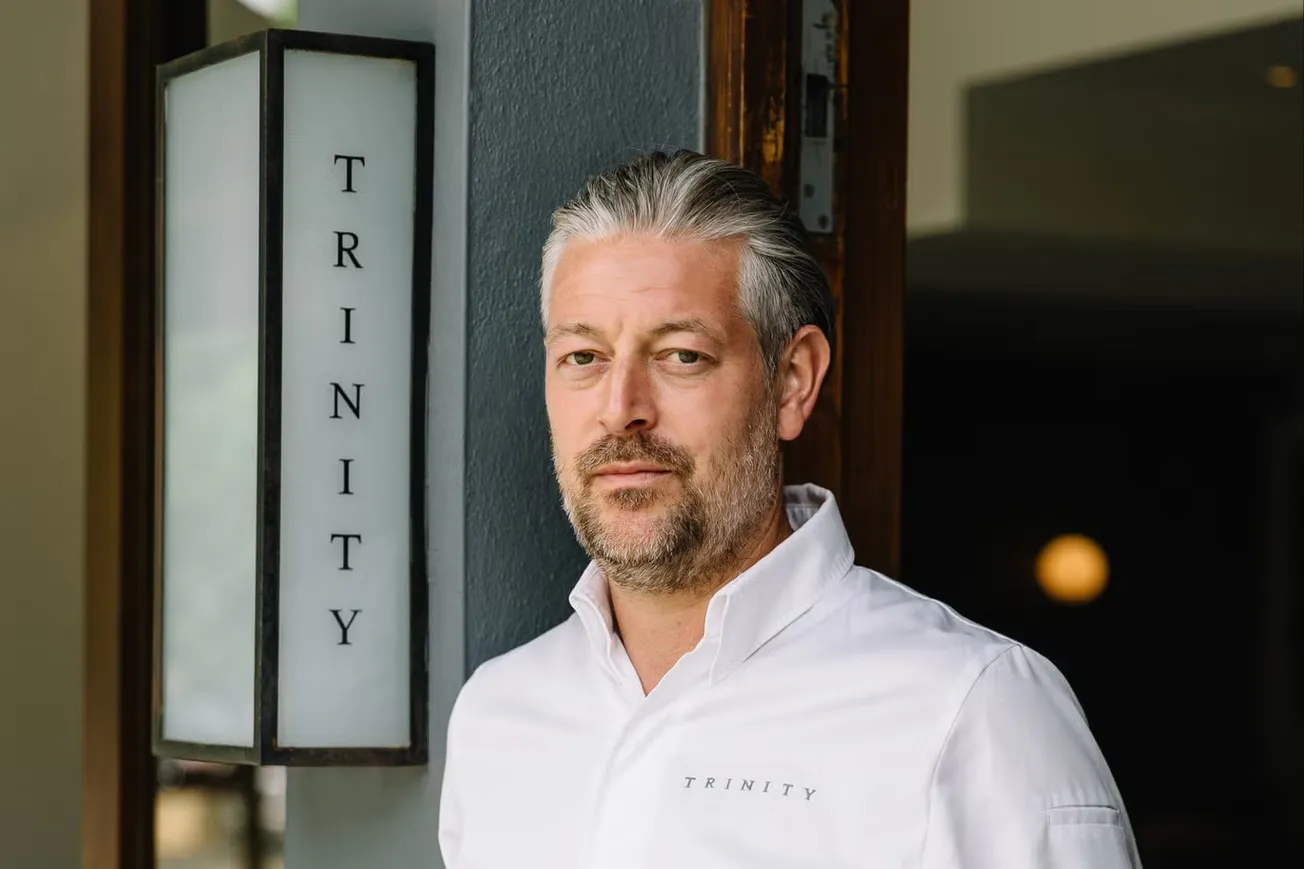Welcome to The Londoner. We’re the capital’s new magazine, delivered entirely by email. Sign up to our mailing list to get two totally free editions of The Londoner every week: a Monday briefing, full of everything you need to know about that’s going on in the city; and a high-quality, in-depth weekend long-read.
No ads, no gimmicks: just click the button below and get our unique brand of local journalism straight to your inbox.
Get ready for the heat with our Londoner summer discount. For just £4.95 a month for your first three months, you can read this story — and the rest of our members-only content. That's a nearly 50% saving, meaning you can treat yourself to one more spritz, guilt-free. Act fast though, it can't stay forever.
Adam Byatt is nonplussed. He’s telling me all about the horror stories of London’s elite kitchens in the 1990s, hyper-macho spaces full of verbal and physical aggression: “It never bothered me. I grew up like that. I walked into a kitchen and someone's screaming in my face or throwing something at me and I was like, ‘yeah, whatever’. But if you've been to Cambridge, that's abnormal. Do you get what I mean?”
London’s fine-dining scene is opaque. Most people in the city will never have access to the experience of dining front of house, let alone of slipping past the swing-door into the kitchen itself. Chefs are also notoriously tight-lipped around those who don’t work in the industry, and it can be hard for outsiders to understand how, exactly, the world functions.
That is, unless you speak to Byatt, one of the capital’s most celebrated chefs — and one of its most beloved. Today, I’m meeting the 51-year-old chef at Trinity, the one-Michelin-star mother ship in his restaurant empire, located just off Clapham Common, to ask him to dish on the past, present and future of the city’s restaurant scene.

Put simply, Byatt is your favourite chef's favourite chef. He’s the kind of guy that less established cooks turn to when they want to understand the world we work in; a well respected industry insider with an immense knowledge of the London food scene he helped make. He’s also recently become an unlikely social media star, attracting millions of views for his videos on the best way to make an omelette or fillet a fish.
In another life, Byatt was destined to be a window cleaner. “I left school with nothing, really. Academia wasn't for me. And then I went along to a careers open day and they had an apprenticeship at Claridge's. That was just chance.” Although he came home in tears after his first day at the five-star hotel among the much bigger men — a torn ligament caused his growth to stunt as a teenager — he learned to love the culture of the kitchen, long before he learned to love food. “I love the process, the discipline, the environment, the people, the chaos, the ever-moving circle of it. That was what I fell in love with, not the food”.

Byatt’s mum worked for a spell as a cook, but food wasn’t a big part of his childhood. When a Tesco superstore opened 500 metres away from the family home, his mum’s humble dinners were replaced with tins of spaghetti and Findus crispy pancakes. Even at Claridges, where Byatt ate the trimmings and leftovers that would return from the dining room — encountering, for the first time, a cutlet of lamb cooked medium rare and a rich sauce laced with truffle — he still didn’t think of himself as a foodie. The word simply didn’t exist. “Now I'm an absolute fanatic about food, but that's been a 35 year journey.”
While it may come as a surprise in an industry that acts as a by-word for extravagant luxury, working-class kids like Byatt — as well as icons like Marco Pierre White, Gordon Ramsey, Marcus Wearing and John Williams — often end up cooking at the kind of traditional, starched-tablecloth fine dining establishments. Meanwhile, it’s the middle class kids — Ruth Rogers from the River Cafe, Fergus Henderson at St John — who open restaurants where the food and the vibe are far less formal, even if still very expensive.
I ask him if he thinks the reason for this is the yearning for structure and direction gained in places like Claridge’s or the Ritz is what appeals to working-class teens cutting their teeth in the industry. After all, if you aren’t used to fancy lunches and travel on the continent, then it’s reasonable that you haven’t developed a sense of yourself as a cook yet — of what good food should be. “I think you’re absolutely on the mark,” Byatt says. “I entered kitchens not from a love of food, but because I needed a job. I could have been in a car factory, I could have been a bricklayer, it didn't matter at that point.” But the industry is changing now, he says, “because less and less working class people come into this industry now… It’s 100% been gentrified.”
Out of a staff of 30, including nine chefs, only two members of the Trinity team smoke. Most of them go to the gym on their days off. These days, when Byatt isn’t behind the stoves, in meetings or spending time with his family, he’s logging an average running distance of 28km per week on Strava. He rarely goes to the pub.
It wasn’t always like this. In the 1990s, being a chef was all very rock and roll. Only a short time before, Marco Pierre White had burst out of the kitchen and into public view, all smoking good looks and temper tantrums (targeted at fellow chefs, as well as patrons). Byatt “joined the party,” as he puts it, at the Square, a former two-Michelin-star restaurant in Mayfair overseen by the legendary Phil Howard. “Those sorts of places — the culture of those kitchens and the culture of those restaurants — that were run by these working-class people are different. They're tougher, harder places.” I ask if he minded the atmosphere of the kitchens of that era, when shouting matches were common and senior chefs were known to throw pans at their juniors, but he insists it wasn’t an issue for him. “I grew up scrapping — on the street, essentially, [so] this was normal,” he laughs.
A young Marco Pierre White during his reign at Harvey's
But Byatt is keen to emphasise that this kind of kitchen culture is not a feature of his restaurants today. “There’s no bullying, there's no bullshit, there's no shouting or screaming, none of that goes on in Trinity.” That doesn’t mean it’s an easy place to work, though — the restaurant demands a lot from its chefs. “I would say it's probably one of the tougher kitchens, only because we are running at capacity in the dining room 85% to 90% of the time.”
Having two deadlines a day (lunch and dinner) is a powerful motivator. Chefs mostly work in sections, where each section — larder, fish, meat and pastry — is that chef’s domain and their responsibility. You don’t need a boss telling you to work faster; you already know that at midday and again at 6pm the doors will open, customers will sit down and food will need to be ready. “And that's pressure, right? That's hard for people. Kitchens are just hard places to work because there's a lot of stuff to do.”
Byatt is sincere when he says he’s proud that kitchens like his have become more inclusive and supportive — he’s especially interested, he says, in what restaurants can do to accommodate neurodivergence. Change is slow, but it’s happening: “Six, seven years ago, if my daughter had asked to work as a chef, I would have definitely put her off. Without a doubt. But now I would embrace her being a chef. Right now, as a young female creative, someone who's talented naturally with food, she could do well.”
I wonder if the fame Byatt has recently found as an influencer (he has around 250,000 followers on Instagram) is that viewers can see that he’s done the hard work, that he has honed his craft and has the weight of tradition behind him. It’s a contrast to a lot of the London foodie culture we see online, awash with cooks who might look the part — tattoos, branded workwear and butcher’s aprons — but who don’t have the same amount of substance. When I put this to him, he’s modest in his reply (“Thank you, that’s really kind…) but does admit that “I worry for the chef in the t-shirt with the tattoos putting radicchio and goat curd on a plate with a bit of green oil but without any background, or repertoire behind that. You can't do that for 20 years.”

Perhaps it’s this desire for a grounding in tradition that explains London’s return to the culinary lineage that Byatt is part of: the second Michelin star awarded to the Ritz this year, and the ascendant popularity of French cooking in places like Bouchon Racine or Camille. “I think that level of cooking is having a bit of resurgence because of the cost of living,” he says. “People are deciding to eat out less, but when they do, they want an experience, they want something they cannot cook at home, they want to know that behind what lands on the plate is the product of craft, knowledge and skill. The top end of the industry right now is thriving. Don't let anybody tell you it's not… I've only got one restaurant in the middle sector,” he tells me, “and it’s the one that’s in the shit.”
Enjoying this edition? You can get two totally free editions of The Londoner every week by signing up to our regular mailing list. Just click the button below. No cost. Just old school local journalism.
At lunchtime, an hour after our meeting, I returned to Trinity to find the friendly waiters who had been hovering and ironing in their tee-shirts are now wearing smart jackets. There’s a lot of “yes, sir”, “no, sir”, napkin folding and compulsive crumb removal going on. But the cooking is rich and flawless.
Over dessert, a perfectly sweet, wobbly custard tart, I try to recall the chef’s parting thoughts, which I later transcribe: “Trinity is my life's work. This has more of my soul, my energy, my blood, sweat, actually, than anything else I have or will ever do. This is it.” Trinity, in a word, is a product of the love he has learnt for food — a perfect manifestation of what drives the chef’s chef.

Comments
How to comment:
If you are already a member,
click here to sign in
and leave a comment.
If you aren't a member,
sign up here
to be able to leave a comment.
To add your photo, click here to create a profile on Gravatar.






